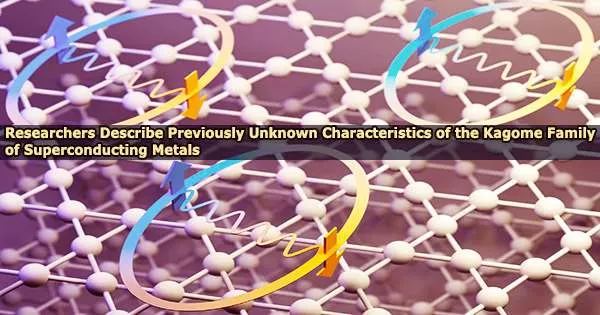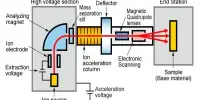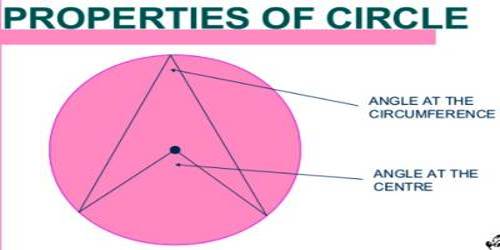Dramatic developments in quantum computing, smartphones that only require a monthly charge, and levitating, lightning-fast trains. These kinds of advances in technology have the potential to completely transform society, but they are still virtually unattainable as long as superconductivity the flow of electrical without resistance or energy waste is not fully understood.
As the materials that make superconducting possible often need to be at extremely low temperatures to achieve that degree of electrical efficiency, this is one of the primary restrictions for the real-world uses of this technology.
To overcome this constraint, scientists must create a clear image of how various superconducting materials appear at the atomic level as they pass through various states of matter to become superconductors.
Researchers from a Brown University lab have made a tiny progress in solving this puzzle for a newly discovered family of superconducting Kagome metals. They were working with an international team of scientists.
In a new study, they used an innovative new strategy combining nuclear magnetic resonance imaging and a quantum modeling theory to describe the microscopic structure of this superconductor at 103 degrees Kelvin, which is equivalent to about 275 degrees below 0 degrees Fahrenheit.
The researchers described the properties of this bizarre state of matter for what’s believed to be the first time in Physical Review Research. Ultimately, the findings represent a new achievement in a steady march toward superconductors that operate at higher temperatures.
Because of the immense technical possibilities they would open in power efficiency, particularly in electrical transmission, transportation, and quantum computing, superconductors that can work at room temperature (or close to it) are regarded as the holy grail of condensed-matter physics.
It stretches the lattice so that the Kagome becomes this combination of hexagons and triangles in one plane and then in the next plane over, after you rotate it half a circle, it repeats itself.
Professor Vesna Mitrovi?
“If you are ever going to engineer something and make it commercial, you need to know how to control it,” said Brown physics professor Vesna Mitrovi?, who leads a condensed matter NMR group at the University and is a co-author on the new study. “How do we describe it? How do we tweak it so that we get what we want? Well, the first step in that is you need to know what the states are microscopically. You need to start to build a complete picture of it.”
The new study focuses on superconductor RbV3Sb5, which is made of the metals rubidium vanadium and antimony. Due to its unusual atomic structure, which resembles a basketweave pattern with intertwined triangles in the shape of stars, the substance receives its name.
Researchers are fascinated by kagome materials because they link two of the most fundamental branches of physics, topological quantum physics and condensed matter physics, and give insight into quantum phenomena.
This material undergoes a cascade of different phase transitions when the temperature is lowered, forming various states of matter with various exotic properties, according to earlier research from various groups.
This material exhibits what is known as a charge-density wave, where the electrical charge density leaps up and down, when it is heated to 103 degrees Kelvin, changing the lattice structure. For the creation of theories that explain the behavior of electrons in quantum materials like superconductors, it is critical to comprehend these jumps.
What the researchers were interested in the maximum temperature state at which the metal begins transitioning between distinct states of matter was the physical structure of this lattice and charge order. This was something that hadn’t been observed before in this form of Kagome metal.
The researchers was able to explain the new structure the lattice turns into and its charge-density wave by combining NMR results with a modeling technique known as density functional theory, which is used to estimate the electrical structure and position of atoms.
They showed that the structure moves from a 2×2×1 pattern with a signature Star of David pattern to a 2×2×2 pattern. This happens because the Kagome lattice inverts in on itself when the temperature gets extremely frigid.
The new lattice it transitions into is made up largely of separate hexagons and triangles, the researchers showed. They also showed how this pattern connects when they take one plane of the RbV3Sb5 structure and rotate it, “gazing” into it from a different angle.
“It’s as if this one Kagome now becomes these complicated things that split in two,” Mitrovi? said. “It stretches the lattice so that the Kagome becomes this combination of hexagons and triangles in one plane and then in the next plane over, after you rotate it half a circle, it repeats itself.”
To provide a complete picture of the exotic states of matter that this superconducting material transitions into, the researchers noted that probing this atomic structure is a prerequisite. They anticipate that the results will prompt additional investigation into whether this formation and its characteristics can enhance superconductivity or whether they should be repressed in order to produce better superconductors.
The new unique technique they used will also allow the researchers to answer a whole new set of questions.
“We know what this is now and our next job is to figure out what is the relationship to other bizarre phases at low temperature does it help, does it compete, can we control it, can we make it happen at higher temperatures, if it’s useful?” Mitrovi? said. “Next, we keep lowering the temperature and learning more.”
Jonathan Frassineti, a joint graduate student between Brown and the University of Bologna, Pietro Bonfà from the University of Parma, and two Brown students, led the experimental research: Erick Garcia and Rong Cong. Theoretical work was led by Bonfà while all the materials were synthesized at the University of California Santa Barbara. This research included funding from the National Science Foundation.
















